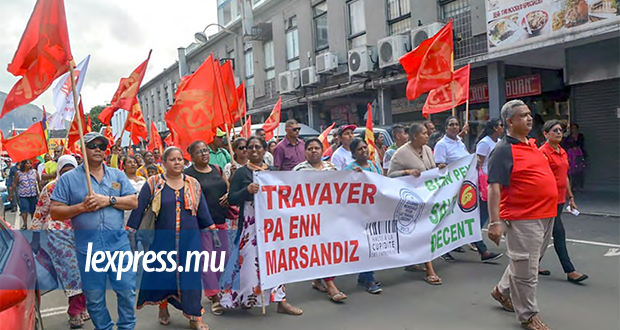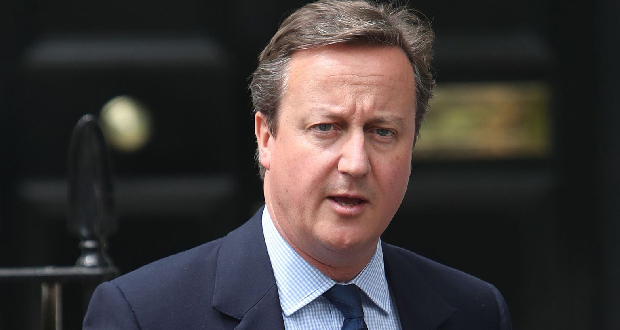Publicité
Employees’ pensions: how the budget changes the PRGF…
Par
Partager cet article
Employees’ pensions: how the budget changes the PRGF…

This year, employers are being prompted to contribute to the Portable Retirement Gratuity Fund (PRGF). However, the 2022-23 budget has introduced some major changes to the way the system works.
1. Where the idea comes from
The Portable Retirement Gratuity Fund (PRGF) was introduced in the 2019 Worker’s Rights Act (WRA), as part of a major overhaul of labour laws in Mauritius. The fund is supposed to finance a gratuity lump sum of private sector employees, who are not covered by private insurance schemes run by their employers, when they retire or die. The idea of the PRGF itself is of a long vintage and is tied up with the decline of the textile industry in Mauritius. In the late 1980s, the law was amended to treat the lump sum payments due to private sector employees for their years of service on a par with other unsecured loans if a business went bust. This ultimately came to bite when in the late 1990s and early 2000s, Mauritius witnessed a wave of factory closures in the textile and export sector. When these factories would close down, their employees would see their lump sum payments for retirement disappear as well, or they were forced to settle for much less.
In 2000, private sector unions started demanding a Portable Severance Allowance Fund (PSAF), which would be run by the government, but with employers contributing in it each month. So, when a factory shut down, lump sum gratuity payments for employees would not be affected, and bankruptcy could not be given as a reason not to pay them. Soon this loophole in the law began making itself felt in other sectors as well. “When you start a business, most of your employees initially will mostly come from a single age group and would retire enmasse within a short period of time of each other when the business would have to pay gratuity payments to them,” explains Reeaz Chuttoo, head of the ‘Confédération des travailleurs des secteurs public et privé (CTSP).
“What started happening was that you would see a lot of companies just shutting down and reopening under different names a few weeks later, since they did not have to pay the full gratuity payments to their retiring employees, they would just re-hire them on lower pay, thinking that they could supplement their wages with the state pension while younger employees found it harder to find work.” By attempting to force employers to contribute to a government-run PSAF, the unions looked to eliminate this problem.
The ERA in 2008
By 2003, two things happened that suddenly put this idea into mainstream politics. The first was a shift within unions themselves; previously, even though a union may have a mix of public and private sector employees, most union leadership was dominated by public sector unionists. Since the threat of losing out on a lump sum gratuity payment was not a threat to public sector workers, this idea was not pushed much. That is, until the unions themselves began splitting and unions catering specifically for private sector workers emerged. The second is that the idea started being backed by international organizations such as the International Labour Organization (ILO). In 2005, the ILO held a seminar at Gold Crest Hotel in Quatre-Bornes, pushing forward the idea and coming up with a report on it in 2006. Although acknowledging that jobs-for-life were no longer a reality and that the Mauritian labour market needed more flexibility, at the same time, the PSAF was seen as a way to secure gratuity payments for private sector workers not covered by private pension schemes. Despite the backing of the ILO and Mauritian private sector unions, the idea soon went into a long hiatus. Instead, came another overhaul of labour laws in the form of the Employment Rights Act (ERA) in 2008. There were two problems for private sector employees that this law left unresolved: the first is that the ERA did not mandate companies to put aside money to pay their employees a gratuity on retirement meant that the old route of declaring bankruptcy to avoid paying retiring employees was left wide open. The other is that although the ERA mandated that gratuity payments should be paid to retiring employees, the only employer responsible for setting aside money to pay was the last employer an employee had before retiring, and only for the time that employee had worked for that particular employer. Ironically, this also was a bad thing for business. If an employee feared losing his gratuity payment upon retirement if he quit his job, this fear disincentivized employees from switching to other jobs and employers, making it harder for businesses to recruit the right talent. “The ERA not only made it easier to hire and fire, but even full severance and gratuity for fired workers was paid only after a long case at the industrial court to prove the dismissal was unjustified,” argues Chuttoo. It was not until the 2014 elections that the idea came back into mainstream politics, this time rebranded as the Portable Retirement Gratuity Fund (PRGF). “Previously, if somebody left an employer, they got nothing. Gratuity was only paid by the last employer and for the length of service with that employer. The PRGF was supposed to correct this shortcoming; so, it was a marked improvement over what happened before,” says Noor Hotee, Senior Consulting Actuary at Aon Solutions Ltd.

2. The PRGF
The PRGF was introduced in the 2019 Worker’s Rights Act and was meant to start as from January 2020. Delayed to April 2020 due to Covid 19, employers have to contribute into the PRGF 4.5 per cent of an employee’s total monthly remuneration to continuously build up a gratuity fund that they would get at retirement. Since the PRGF would be managed by the government, and not by any private employer, it did not matter how often an employee changed jobs. Each employer would continue to pay into it. The only employees outside the PRGF system would be those in the private sector earning more than Rs200,000 monthly; those already in a private pension scheme run by their employers; migrant and foreign workers; and those employed in the public sector and already covered under schemes such as the Statutory Bodies Pension Fund. The way it works is simple: employers pay their 4.5% contribution to the Mauritius Revenue Authority (MRA), which in turn transfers those funds to the social security ministry.
A PRGF advisory committee made up of a representative of the finance ministry, one from the social security ministry, three each from employers and unions would decide on changes to the scheme. The funds themselves are handled by an investment committee similar to the one of the National Pension Fund. At retirement, the Administrator of the PRGF then pays a retiring employee the equivalent of 15 days’ pay for each year in employment. Although the system was initially supposed to start as from 2020, due to the Covid-19 pandemic, the government passed the Worker’s Rights (Portable Retirement Gratuity Fund) (Amendment) Regulations 2020 that temporarily suspended employers’ payments into the PRGF until January 2022. “This system has one problem, workers in Mauritius now are used to getting a pay-out, when a business closes, or they lose their jobs. Today, most of that goes into the PRGF instead. Those who don’t get these pay-outs see this as a shortcoming of the system, but it’s a longer-term view; they get that gratuity at retirement,” says Chuttoo.

3. What the current budget does
WHAT the 2022-2023 budget changes in some ways how the PRGF works, resolving some issues, but potentially creating others. First, is one loophole that the budget has attempted to plug. Until the late 1990s, most private pension schemes were run by insurance companies which managed and invested the funds meant for private pensions. The private pension industry was regulated by the Private Pension Schemes Act of 2012 where companies wanting to set up their own pension schemes could do so through foundations or trusts.
This left the setting up of a pension scheme for their employees entirely to employers. So, when the PRGF came along in 2019, it mandated an employer to contribute 4.5 per cent of each employee’s monthly remuneration, but it exempted private pension schemes. Theoretically, employers with employees outside private pension schemes, but who did not want to contribute 4.5 per cent each month for their employees could try to evade the PRGF system by setting up new private pension schemes demanding much lower contributions from employers.
So, in 2019 and 2021 (2020 was the year of Covid-19), the Financial Services Commission (FSC) was inundated with applications from businesses wanting to set up their own pension funds. “Some of these employers who did not want to pay into the PRGF, started setting up their own pension schemes, some with very low contribution rates from employers,” says Hotee, the actuary at Aon Solutions Ltd. Since private pension schemes are set up voluntarily by employers, “the FSC technically cannot prevent these private pension funds from being set up, so it approved those schemes, but noted that such schemes could not be deemed as fit for purpose as pension funds and as such employers should not be exempt from having to contribute to the PRGF”. Many employers genuinely want to provide for a pension for their employees, but since many could not afford to set aside as much as the PRGF, “this led to the perception that this was a way of evading the 4.5 per cent PRGF contribution. So, in effect, the PRGF has created a moral hazard which the budget is now trying to remove by making private pension schemes have a minimum compulsory employer contribution of 4.5%,” argues Mr Hotee.
The second budget proposal
To help resolve this issue, what the 2022-23 budget has done is mandate that the rate of contributions expected from employers should not be less than the rate prescribed by the PRGF, i.e., 4.5 per cent. This measure also changes the way private pension schemes work: “Previously private pension schemes were voluntary with no element of compulsion of how much an employer could contribute, what this proposal does is make private pension schemes demand a minimum of a 4.5 per cent monthly contribution from an employer,” says Hotee. In such cases, cost-conscious small employers will prefer to sign up for the PRGF.
While the first budget proposal makes sense from the point of view of preventing the danger of businesses potentially evading the PRGF system at the expense of their employees, the other thing the budget does when it comes to the PRGF is less easy to understand. And this is the budget proposing to allow transfers of funds out of private pension schemes into the PRGF. Why this is a problem is obvious: while private pension schemes – like public sector pension schemes – are structured in such a way to ensure a pension stream for life, the PRGF is not designed for that.
The PRGF is rather a financing mechanism ensuring the payment of a lump sum retirement gratuity to private sector employees. “Under existing laws, any member of a private pension scheme can request a transfer of funds into another pension scheme (if they wish) when they leave service,” insists Hotee, “but what this proposal does is encourage people to transfer money out of pension schemes hoping to cash it in in the form of a lump sum. This policy is clearly misguided, it will encourage a big pay-out in one go as opposed to an income for life, which would lead retired employees to rely more and more on state pension schemes such as the Basic Retirement Pension, and hence rely more on the State.” Having the PRGF potentially vacuum funds out of private pension funds like this only adds to the fears that were already present in the industry that the PRGF could end up crowding out the rest of the private pension industry.
This was due to a problem left unaddressed in the PRGF system: employers could claim deductions from only half of what they contributed on behalf of their employees into private pension funds, but the whole of what they put into the PRGF. “So, it ends up being cheaper for businesses to turn to the PRGF, if we just look at this from a cost perspective, then you could see private pension funds being crowded out” says Hotee. “An industry that is already looking less attractive in a pension market where it has to compete against fast-escalating state pension and where cash-strapped employers are already having to pay contributions to the CSG system. At what point do they conclude that these are enough for their employees and that paying for private pension schemes is just not worth the trouble?”
The problem is that with a rapidly ageing population putting increasing pressure on the state pension system, encouraging the growth of a private pension industry was seen as a way to help ease some of that pressure. “We argued strongly against the introduction of compulsory minimum contributions to private pension schemes since this would discourage companies to set up their pension schemes or would force some to close their existing schemes. This is why we believe that instead of putting forward incoherent policies and announcing them in successive budget speeches (thus taking everybody by surprise), there should be more intelligent consultations with the wider pension scheme industry and professionals; otherwise, what we are doing is potentially causing irreversible damage to the pensions system and making it more complicated than necessary,” concludes Hotee.
Publicité
Les plus récents






